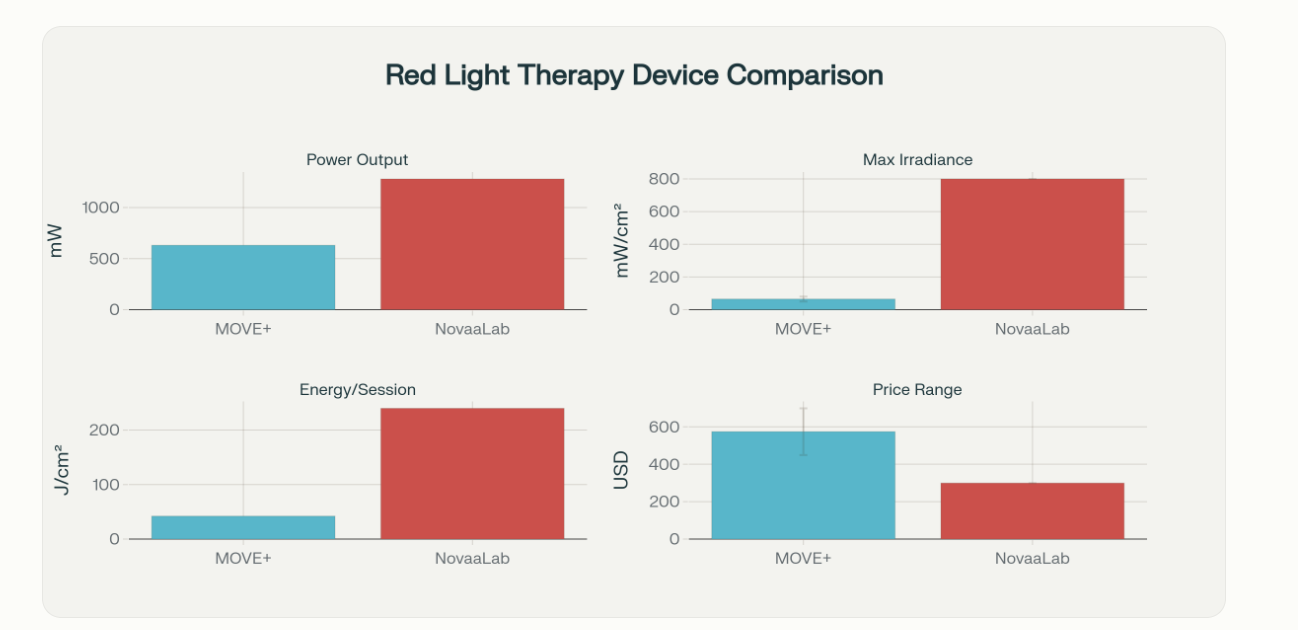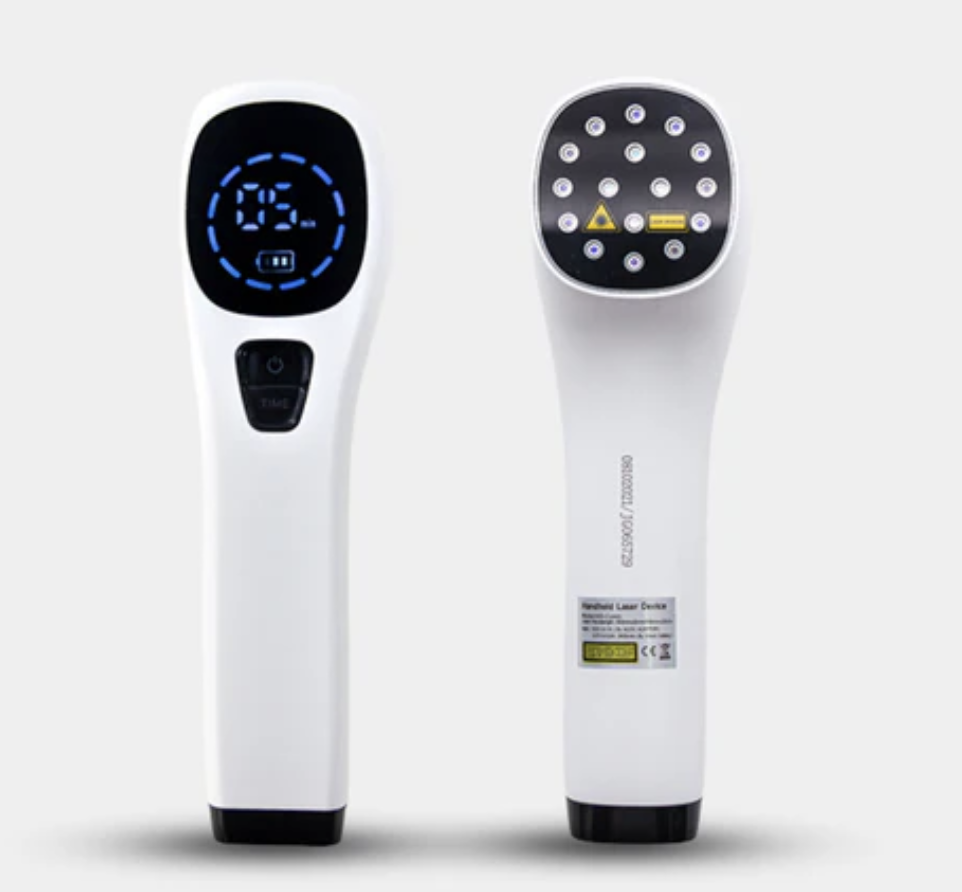Red Light Therapy for Fertility: Miracle Solution or Just a Supermarket Scanner
I came across a recent interview for a new Kineon device being promoted for fertility. Before getting dazzled by claims of “laser therapy,” it’s helpful to understand what kind of laser you’re bringing into your home. A Class 1 laser, the kind found in the Kineon Move+ Pro is the same level of laser found in your everyday printer, the supermarket checkout scanner, or a DVD player (remember those?) These devices are designed for safety: their output is so low or well-enclosed that you can use them day in and day out without thinking twice about eye or skin risks under normal operation.
In fact, for a laugh, if those fertility claims were truly miraculous, maybe the quickest way to supercharge your ovaries would be to check yourself out with a bag of groceries and, while no one’s looking, casually scan your abdomen at the self-checkout! But please, save your receipt and your skepticism: science shows most home-use Class 1 devices are designed with safety, not deep therapeutic power, in mind - and for fertility deep penetration is essential.
More Hype? Or Real Studies?
Lots of red light therapy websites toss around terms like “deep tissue penetration!” and “targeted healing energy!” Some even claim their light can reach up to 5 or 6 centimeters beneath the skin. Here’s where serious questions crop up: studies show that wavelength is only half the story. Sure, near-infrared (like 808 nm) can go deeper than red LED, but only if there’s enough power behind it. Home gadgets stay “safe” because their output is basically a trickle. By the time that little bit of light gets to your reproductive organs, it’s more like a Christmas Tree light twinkle than a helicopter spotlight.
What Does Science Say About Fertility?
Here’s the truth: there is promising science around red light and reproductive health (about 25 studies so far), but 99% comes from far more powerful lasers or very controlled lab situations. Studies from Japan and Denmark (using clinic-only lasers) suggested higher pregnancy rates in women with fertility challenges. But we are comparing apples to oranges when you compare a Class 1 laser to a Class 3b or Class IV.
Credibility
Forgive my cynicism, but as a midwife who works in this field I’m disappointed by what’s happening in this industry around fertility claims. If you don’t know much about fertility and are promoting a fertility device it’s really helpful to understand a few things about fertilization and pregnancy and how it actually happens. Describing how well the sperm implants into the uterus…is simply bizarre. In correct biological terms, sperm do not implant into the uterus. What I think they mean is "implantation of a fertilized egg (embryo) into the uterine lining".
Next there’s the research cited by the interview. Describing Ohshiro’s pioneering work from the early 2000s (and earlier) as ‘recent’ research. We’re talking research 25 years ago. What about actual recent research from the last few years? Claims are made that “there’s really a lot of research around PCOS”. This is inaccurate. There are no human studies on PCOS and fertility. (If I’ve missed a study please let me know). Based on what we know about the mechanism of PBM it’s very possible that it can help - but we’re not there yet and women deserve to know where the research stands - see below.
Animal models: Several studies have been done on rats with experimentally induced PCOS, showing that LLLT can improve ovarian function, normalize ovary structure, and adjust some hormones. These studies found increased development of healthy follicles, reduced ovarian cysts, and restoration of hormone levels close to normal ranges.
In vitro human oocyte studies: A handful of papers looked at PBM’s effect on human eggs (in a petri dish). One study showed that red light therapy helped improve oocyte maturation and markers of cellular health in women with PCOS, suggesting benefits at a cellular level. However, this is very preliminary and not equivalent to clinical evidence.
Clinical/human trials: There is extremely limited clinical trial evidence for direct use of PBM/LLLT/red light therapy in women with PCOS. Most “human research” consists of very small studies or observational reports, and some focus more on related symptoms (such as hirsutism/hair growth), not core fertility outcomes.
The interview’s presentation, implying dramatic, nearly universal benefit for complex reproductive disorders, significantly overstates what the current research shows, especially when speaking about rapid and large-scale improvements with home-use devices. Several sweeping statements were also made, such as “everyone who contacted us about endometriosis had pain scores drop dramatically.” While this is great news for those particular women, these are anecdotal reports, not clinical research. Presenting it as typical is a little misleading, especially as clinical studies demonstrate variable results with non-responders (yes some women don’t even respond to the Gigalaser). The claim that shining light on distant body parts (like the neck) can dramatically improve fertility via "abscopal" effects is based on very limited early research. Presenting this as proven science oversells the device and risks misleading those struggling with infertility (and you know how I feel about that).
Rigorous, well-powered clinical trials are still needed to determine if these applications can live up to their marketing promises. It sounds like there may be some independent research happening for this device and I would like nothing more than to be proven wrong so women do have more options and this becomes a best selling device for fertility - but based on the device specs so far I won’t be holding my breath.
How Does The Kineon Compare with the NovaaLab Home Laser?
The NovaaLab is a more powerful device - my new laser with 1300 mW of laser output will be available in November 2025 online.
How to Shop Smart
If you’re buying a red light device, know what you’re getting and question the hype.
Is the “laser” power closer to your barcode scanner than an actual medical laser?
Some handheld lasers available for home use are much more powerful. The NovaaLab home laser is currently the most powerful home laser available in the USA.
You might get real relief from pain, but there is little proof of deep tissue or ovary-level impact with the Kineon device (yet).
Additional Resources:
NovaaLab Home Laser


